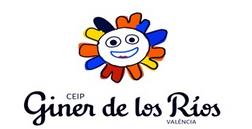
4 minute read
Appendix
GENERAL INFORMATION:
The Food and Drink dictionary was made in cooperation with all partner schools in the project Change Your Lifestyle. It was coordinated by the Srečka Kosovela Primary School from Slovenia.
Advertisement
The main focus was put on fruit and vegetables as they are considered the healthiest food that should be consumed in abundance.
We continued with dairy products that are important for youngsters because they contain nutrients that are involved in bone health. Calcium, vitamin D and phosphorus are important for bone building and the high potassium content of dairy foods can help lower blood pressure.
The next group of word was meat. In many parts of the world, meat makes up a considerable portion of a typical diet. It contributes protein, minerals, vitamins and fat and these nutrients are important for their beneficial effects on our well being.
APPENDIX
Fish and seafood is also very important for people's health. Fish is filled with omega-3 fatty acids and vitamins such as D and B2 (riboflavin). Fish is rich in calcium and phosphorus and a great source of minerals, such as iron, zinc, iodine, magnesium, and potassium. The American Heart Association recommends eating fish at least two times per week as part of a healthy diet. Nuts and seeds are good sources of protein, healthy fats, fibres, vitamins, and minerals. Nuts and seeds regulate body weight as their fats are not fully absorbed, they regulate food intake, and help burn energy. Sweets are important too, although we must consume them in moderation. Sweets are loved all around the world for their mouthwatering flavours and taste. Sweets offer several rewards for our heart and other vital organs of the body. When you are feeling low, a sweet is a good alternative. Glucose is the primary source of energy in our body that comes due to the breakdown of sugar.

APPENDIX
With no glucose, you will not have the required energy to perform day-to-day activities. The correct number of sweets can help to fuel your mind and body. Some sweets also contain all the necessary fibers, antioxidants, and vitamins for the diet. So on the low and depressing days when you want to boost your energy, do not look further and consume a sweet for immediate action! Drinks are extremely important, too. It's crucial to stay hydrated through the day. The most suitable drink to stay hydrated is water. Drinking enough water each day is crucial for many reasons: to regulate body temperature, keep joints lubricated, prevent infections, deliver nutrients to cells, and keep organs functioning properly. Being wellhydrated also improves sleep quality, cognition, and mood. Basic food is of vital importance as it consists of goods that humanity has consumed over thousands of years and has been part of people's diet for a long time. We can't live without eggs, oil, rice, pasta, salt, pepper and sugar.

APPENDIX
Fast food isn't very recommendable and should be considered as a treat, so it should be consumed very rarely. Fast food is typically loaded with calories, sodium, and unhealthy fat—often enough in one meal for an entire day. It also tends to be low in nutrients and almost totally lacking in fruit, vegetables, and fiber. That doesn’t mean you have to avoid fast food entirely. When you’re hungry and on the run, fast food can really hit the spot. It’s cheap, tasty, and, best of all, convenient. But while it’s okay to indulge a craving every now and then, to stay healthy you can’t make it a regular habit. The key is moderation.

PROCEDURE OF CREATING THE DICTIONARY:
The dictionary was illustrated by the pupils from partner countries who were supervised by their teachers. The words included in the dictionary were selected by the the Slovenian coordinator Ester Trobec in collaboration with coordinators from partner countries.
APPENDIX
Pupils had to draw the food and drink items on a A4 piece of paper in crayons or coloured pencils. Pupils and teachers from partner schools also had to translate the words from English into their own language. Pupils drew the items, then the teachers scanned the drawings and sent them to the Slovenian team which inserted them into the dictionary. The dictionary is a result of collective work of all partner countries. Each country had to draw two groups of words: fruit and vegetables were drawn by pupils from
Slovenia, meat, fish and seafood by pupils from Romania, nuts, seeds and sweets were drawn by pupils from Spain, drinks and fast food by pupils from Greece and dairy products and basic food by pupils from
Turkey.

The dictionary was completed in the Canva platform by the Slovene teachers Maja Mržek and Ester Trobec.



Title: Food and Drinks picture dictionary Project: Erasmus+ Change Your Lifestyle! Project number: 2019-1-RO01-KA229-063230 Authors: Pupils and teachers of partner countries: Romania, Slovenia, Turkey, Greece and Spain Date: August 2022 Acknowledgments: teachers and pupils of partner countries This is a common result of the project.


